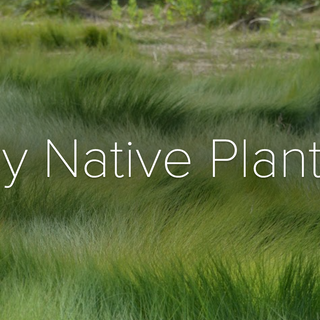
Reports from around the globe in the last 25 years about the alarming loss of biodiversity on our planet sit heavily with every gardener I know.
With that in mind and with the hope and the knowledge of the agency we as a Gardeners hold in this world, I’m so pleased to be in conversation this week with two men who’ve been working and studying this very aspect of our world in their place.
The authors of the report wish to thank among the many other people who contributed to this report both past and present, the natural heritage network which is a community of ecologists and botanists at agencies in all the New England states. They are the ones out in the field collecting rare plant locations and population status and especially the important plant areas noted in the report is directly informed by their generously having shared that field collected date.
In July of 2021 they along with their organizations published a report entitled “Conserving Plant Diversity in New England”. This was first a concept of author William Brumback, Director of Conservation Emeritus of the Native Plant Trust. The report is co-authored by Brumback and my two guest’s this week, The Nature Conservancy’s Director of Conservation Science for the Eastern United States, Mark Anderson, and Michael Pientadosi, current Director of Conservation for the Native Plant Trust.
Photos courtesy of Native Plant Trust , all rights reserved.
You can follow find the Conserving Native Plant Diversity Report on line at: https://www.nativeplanttrust.org/plant-diversity-report/
You can find the UN draft proposal for preserving 30% of global biodiversity by 2030 here: https://www.cbd.int/doc/recommendations/wg2020-02/wg2020-02-rec-01-en.pdf
You can find the Biden Administration's report on Conserving and Restoring America the Beautiful here: https://www.doi.gov/sites/doi.gov/files/report-conserving-and-restoring-america-the-beautiful-2021.pdf
IF YOU LIKE THIS PROGAM,
you might also enjoy these Best of CP programs in our archive:
JOIN US again next week, when we move back to the beauty and wonder of the garden in season -that is the winter season in conversation with UK based photographer Andrew Montgomery, whose new book co-created with writer and plantswoman Clare foster is entitled "Winter Gardens". In winter, the garden takes on a new, almost mystical guise. Whether you are drawn to the crisp shapes of a traditional topiary garden or the anarchy of a meadow full of seed heads, there is beauty and wonder to extract from every garden at this time of year, and there is a deeply satisfying visual beauty and wonder in every page of this artistically conceived tribute to the Winter Garden. Listen in!
Cultivating Place is made possible in part by listeners like you and by generous support from the California Native Plant Society, on a mission to save California’s native plants and places using both head and heart. CNPS brings together science, education, conservation, and gardening to power the native plant movement. California is a biodiversity hotspot and CNPS is working to save the plants that make it so.
For more information on their programs and membership, please visit https://www.cnps.org/
Thinking out loud this week:
I am thinking today about the two sides of naming and knowing the names of plants. It is a sign of respect and intimacy, but can also be a sign of control and ownership that comes with a lot of colonial baggage. This I think has sometimes hobbled our perspective and vision as to how how we understand plants, plant communities, and ecology.
I think this is important for us as gardeners to understand and to do our best to understand our plants and place by always trying to better understand as many of the histories overlaying these plants and histories – these names of loved ones – as we can. The indigenous names of our plant friends, the different common names, and the botanical latin names by which – at least for now – can help ensure we’re talking about the same beloved plant.
I think it’s worth noting that while this biodiversity update report and its goals are focused on the New England region, as Michael and Mark point out they are based in global strategies and global goals around conservation, namely The global strategy for plant conservation GSPC part of the United Nations Convention on biological diversity, aiming to conserve 30% of the ecosystems of the globe for biological diversity by 2030; as well as the restoring America the beautiful the Biden administration’s campaign another 30 x 30 goal focusing on the United States.
If you are not familiar with these and are interested in taking a peek, I have included links to both strategic planning documents at the end of the weekly post above.
WAYS TO SUPPORT CULTIVATING PLACE
SHARE the podcast with friends: If you enjoy these conversations about these things we love and which connect us, please share them forward with others. Thank you in advance!
RATE the podcast on iTunes: Or wherever you get your podcast feed: Please submit a ranking and a review of the program on Itunes! To do so follow this link: iTunes Review and Rate (once there, click View In Itunes and go to Ratings and Reviews)
DONATE: Cultivating Place is a listener-supported co-production of North State Public Radio. To make your listener contribution – please click the donate button below. Thank you in advance for your help making these valuable conversations grow.
Or, make checks payable to: Jennifer Jewell - Cultivating Place
and mail to: Cultivating Place
PO Box 37
Durham, CA 95938















Need a good farming solution to have a space to relax and breathe nature slope run